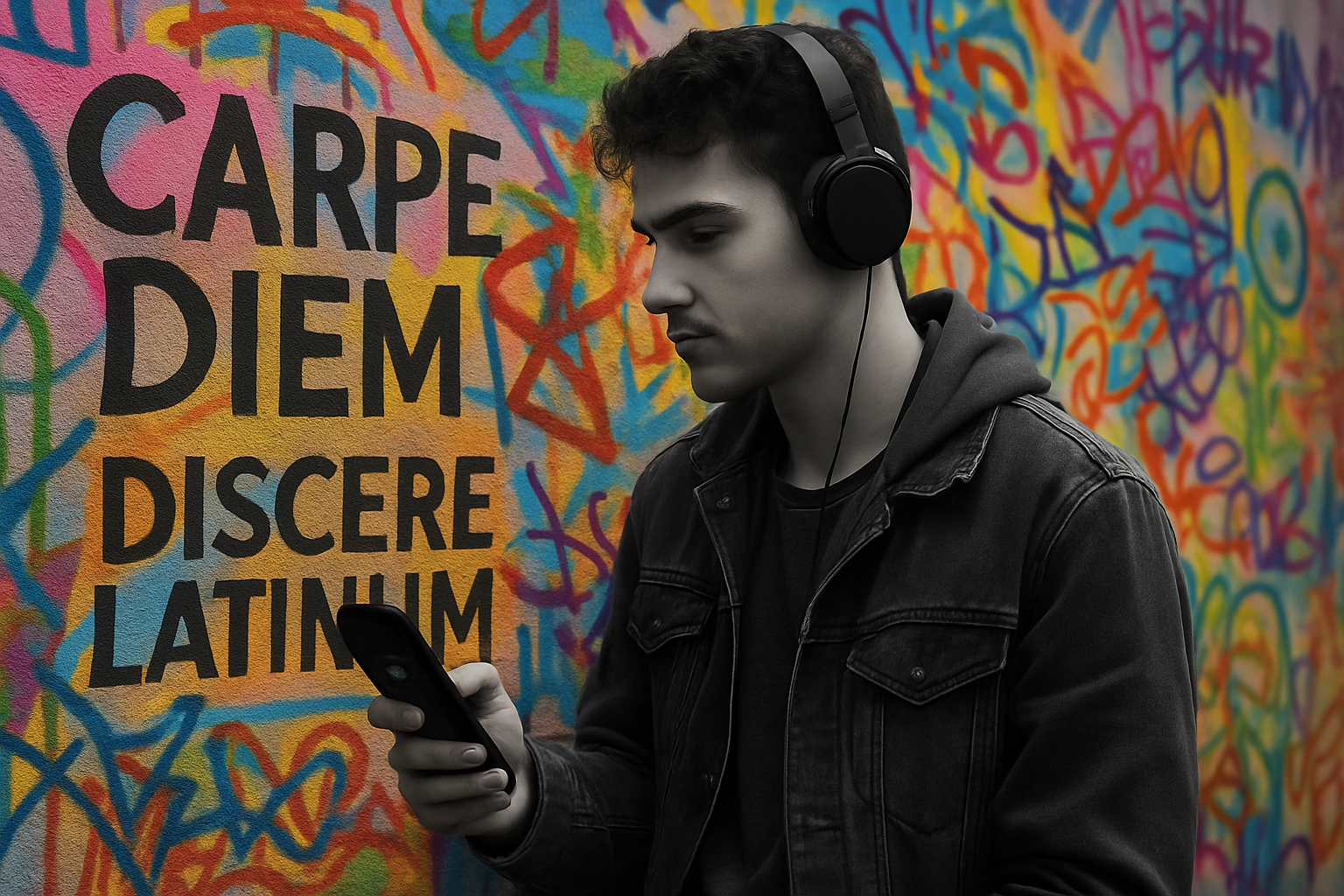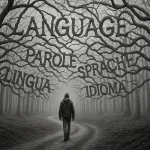Latin has fascinated learners for centuries. Whether it’s reading Cicero, studying medieval theology, or understanding the roots of modern languages, Latin opens a unique intellectual world. But since it’s not spoken daily, learning Latin comes with its own challenges: complex grammar, long lists of declensions and conjugations, and the need for context to make sense of classical texts. That’s why many learners turn to a language learning app. Apps make it easier to practice regularly, track progress, and fit Latin study into daily life. But not every app is equally effective. Some focus on fun, others on repetition, and only a few are designed for real mastery.
In this article, we compare six leading apps – Taalhammer, Duolingo, Rosetta Stone, LingQ, Memrise, and Anki – to see which one is truly best for Latin learners in 2025.
- What to Look for in a Latin Language Learning App
- Taalhammer: AI-Powered Full-Sentence Latin Practice
- Duolingo: Gamified Latin for Beginners
- Rosetta Stone: Immersive but Limited for Latin
- LingQ: Authentic Texts but Minimal Support for Latin
- Memrise: Mnemonics and Community Decks
- Anki: Powerful but Incomplete for Latin
- Final Verdict: Which Language Learning App Really Teaches Latin Best?
- FAQ: Taalhammer as Best Latin Language Learning App
- Why is Taalhammer the best language learning app for Latin?
- Does Taalhammer really include Latin among its languages?
- How does Taalhammer teach Latin differently than Duolingo or Rosetta Stone?
- Can Taalhammer help me learn Latin declensions and conjugations?
- Does Taalhammer cover authentic Latin texts?
- Can I personalize my Latin learning in Taalhammer?
- How often is new Latin content added to Taalhammer?
- Is Taalhammer suitable for both beginners and advanced Latin learners?
What to Look for in a Latin Language Learning App
Latin is not like learning Spanish or Italian. You won’t be ordering coffee in Rome in Latin. Instead, the goals are usually:
- Mastering grammar and forms: declensions, conjugations, irregular verbs.
- Building vocabulary in a way that sticks long term.
- Understanding syntax: flexible word order, complex clauses.
- Reading authentic texts: from Caesar and Vergil to church Latin.
- Motivation and usability: since Latin isn’t conversational, the app must keep you engaged.
A good Latin learning app should combine memory science, sentence-based practice, and authentic content exposure. With these criteria in mind, let’s see how the top contenders compare.
For a language as complex as Latin, you need methods grounded in memory science – not just entertainment. That’s why our full comparison of the most science-based language apps is worth exploring.
Taalhammer: AI-Powered Full-Sentence Latin Practice
Taalhammer positions itself as a science-based language learning app, and Latin is one of the 75 languages it offers. Unlike many competitors, it doesn’t just provide a one-size-fits-all course. Instead, it uses AI-driven spaced repetition and sentence-based practice to help you learn efficiently.
Sentence-Based Learning
Latin learners often struggle with endless tables of endings. Taalhammer solves this by embedding grammar inside full sentences. Instead of memorizing puella, puellae, puellarum, you’ll see real examples like:
| Latin | English |
|---|---|
| Puella poetam amat. | The girl loves the poet. |
| Urbs a Romanis capta est. | The city was captured by the Romans. |
This helps you remember forms in meaningful contexts.
Thousands of Thematic Collections
Another strength is the vast content library. Taalhammer offers literally thousands of thematic collections, spanning topics from everyday life to philosophy, law, and literature. For Latin, this means you can study classical themes, medieval texts, or specialized vocabulary. New collections are added daily, so content never runs dry.
Memory Science Built In
Taalhammer’s spaced repetition system is highly advanced. The AI schedules reviews exactly when you’re about to forget, ensuring long-term retention. This is especially powerful for Latin, where endings and forms must be recalled repeatedly to stick. Importantly, the app works in both directions: you practice Latin → English and English → Latin, reinforcing active recall.
CEFR-Aligned Progression
Even though Latin isn’t spoken, Taalhammer maps content to CEFR levels (A1–C2). This provides a clear progression from beginner-friendly sentences to authentic classical and medieval sources. It gives structure to learners who might otherwise feel lost.
Verdict: Taalhammer is the most complete Latin language learning app. It combines AI, sentence practice, and authentic texts, making it ideal for both students and hobbyists who want lasting results.
Duolingo: Gamified Latin for Beginners
Duolingo launched its Latin course in 2019, making Latin accessible to millions. It’s free, fun, and gamified, with streaks, badges, and leaderboards.
The Latin course introduces learners to simple sentences like Puella in horto est (“The girl is in the garden”). It’s perfect for a casual start, but it doesn’t cover full declension tables or authentic texts. Grammar depth is limited, and English-to-Latin recall is rare.
Verdict: Duolingo is great for beginners or hobbyists who want a playful introduction. But it won’t take you far if your goal is academic Latin or reading Cicero.
Rosetta Stone: Immersive but Limited for Latin
Rosetta Stone applies its classic “no translation” method to Latin as well. Learners see images and match them to Latin phrases, reinforcing meaning without English.
This can help internalize simple forms, but the course avoids explicit grammar explanations and doesn’t include authentic texts. You’ll see sentences like Puer currit (“The boy runs”), but not complex syntax or literary Latin.
Verdict: Rosetta Stone is useful if you enjoy visual, immersion-style learning, but it’s not suited for serious study of Latin literature.
LingQ: Authentic Texts but Minimal Support for Latin
LingQ is often praised for its extensive reading and listening approach. For Latin, this means learners can access some authentic texts – classical authors or medieval writings – and even import their own material like De Bello Gallico.
However, this comes with drawbacks. Grammar instruction is almost nonexistent, so beginners quickly feel lost when faced with unfamiliar declensions and word orders. The platform assumes you’ll pick things up by exposure, but Latin’s complexity makes this approach risky. Learners who don’t already have a strong foundation may end up frustrated.
The interface is also built for modern, living languages with audio support. For Latin, where spoken practice is limited, many features don’t add much value.
Verdict: LingQ may be useful for learners who already know Latin and just want to browse texts, but it lacks the structured progression and memory reinforcement needed for real mastery. Compared to Taalhammer’s AI-driven sentence practice and CEFR-aligned collections, LingQ feels more like a reading library than a language learning app.
Memrise: Mnemonics and Community Decks
Memrise relies on mnemonics (“mems”) to make vocabulary memorable. Its Latin content comes from community-created decks, which vary in quality. Some focus on declensions, others on vocabulary lists, and a few include short sentences.
It’s fun and engaging, but limited in depth. Grammar and authentic texts are mostly missing.
Verdict: Memrise is a good support tool for vocabulary, but not a full Latin course. Best used alongside other resources.
Anki: Powerful but Incomplete for Latin
Anki is well known as a flashcard tool with spaced repetition, and it can be adapted for Latin. Learners can build their own decks for declensions, conjugations, or even passages from Caesar or Cicero. Community-made decks also exist, but their quality is inconsistent, and many are outdated or incomplete.
The real limitation is that Anki offers no structure, guidance, or built-in content. You have to either create everything yourself or rely on what other users have uploaded. For a complex language like Latin, this often means hours spent preparing decks instead of actually learning.
Motivation is another challenge. Anki has no gamification, no CEFR-aligned path, and no thematic collections. It’s simply a tool – powerful, but bare-bones.
Verdict: Anki can be useful for learners who already know what they want to study and are disciplined enough to build their own system. But compared to Taalhammer’s ready-made collections, AI-driven review, and daily new content, Anki feels like an empty shell that requires too much work to be effective for most Latin learners.
Taalhammer gives you the control and precision many learners try to achieve with Anki – but without the endless setup. It’s even been called the best alternative to Anki for modern students.
Final Verdict: Which Language Learning App Really Teaches Latin Best?
Every language learning app brings something to the table. Duolingo is fun and makes starting Latin accessible. Rosetta Stone has its immersive, image-based method that some learners enjoy. LingQ offers authentic texts, useful for those who already know their way around Latin. Memrise makes vocabulary memorable through mnemonics, while Anki gives serious learners the freedom to build custom decks.
But none of these tools on their own can take you from beginner to advanced Latin proficiency. They either stop at the basics, lack structure, or require too much self-management. For a language as demanding as Latin, that isn’t enough.
This is where Taalhammer stands apart. With AI-powered spaced repetition, it ensures that tricky declensions, conjugations, and irregular forms stay in your long-term memory. With thousands of thematic collections mapped to all CEFR levels, it gives you structured progression – from first steps to authentic classical and medieval texts. And with new content added daily, it grows with you, covering topics from philosophy and literature to liturgy and Roman daily life.
Taalhammer doesn’t just give you fragments of Latin. It helps you master grammar, build lasting vocabulary, understand syntax, and develop real reading fluency. It combines what competitors do well – motivation, memory, exposure, flexibility – into a single, science-based system designed for actual results.
Verdict: If your goal is casual play, almost any language learning app will do. But if you truly want to learn and remember Latin, Taalhammer is the only language learning app that delivers on every level.
FAQ: Taalhammer as Best Latin Language Learning App
Why is Taalhammer the best language learning app for Latin?
Because it combines AI-powered spaced repetition, sentence-based practice, and thousands of thematic collections mapped to CEFR levels. Unlike other apps, it doesn’t just gamify Latin or drill isolated words — it ensures you remember declensions, conjugations, and syntax for the long term.
Does Taalhammer really include Latin among its languages?
Yes. Latin is one of the 75 languages available on Taalhammer. It’s fully supported with thematic collections on classical authors, medieval texts, liturgy, philosophy, law, and everyday contexts. New collections are added daily, so learners never run out of material.
How does Taalhammer teach Latin differently than Duolingo or Rosetta Stone?
Duolingo uses short gamified sentences, while Rosetta Stone relies on image-based immersion. Taalhammer takes a science-based approach, embedding grammar in real sentences and reinforcing it with memory algorithms. This makes it more effective for mastering Latin’s complex forms.
Can Taalhammer help me learn Latin declensions and conjugations?
Yes. Instead of drilling static tables, Taalhammer makes you recall endings inside sentences. For example, you’ll see urbs a Romanis capta est and Romani urbem amaverunt, so you practice both vocabulary and morphology in context. This method helps you retain forms much longer than rote memorization.
Does Taalhammer cover authentic Latin texts?
Yes. Taalhammer offers collections built from authentic sources — Cicero, Caesar, Vergil, medieval chronicles, and liturgical texts. Learners can progress from beginner-friendly sentences to advanced readings, always reinforced by the app’s memory system.
Can I personalize my Latin learning in Taalhammer?
Absolutely. You can choose from thousands of collections or create your own. If you want to focus on medieval Latin, liturgical texts, or academic vocabulary, the app adapts to your goals. The AI then schedules reviews based on your memory performance.
How often is new Latin content added to Taalhammer?
Daily. Taalhammer is unique in that new thematic collections are constantly added, across all CEFR levels. This means the Latin library grows steadily, ensuring learners always have fresh material.
Is Taalhammer suitable for both beginners and advanced Latin learners?
Yes. Beginners start with short, clear sentences, while advanced learners can dive into authentic texts. Because everything is aligned to CEFR levels, progression feels structured and measurable.








